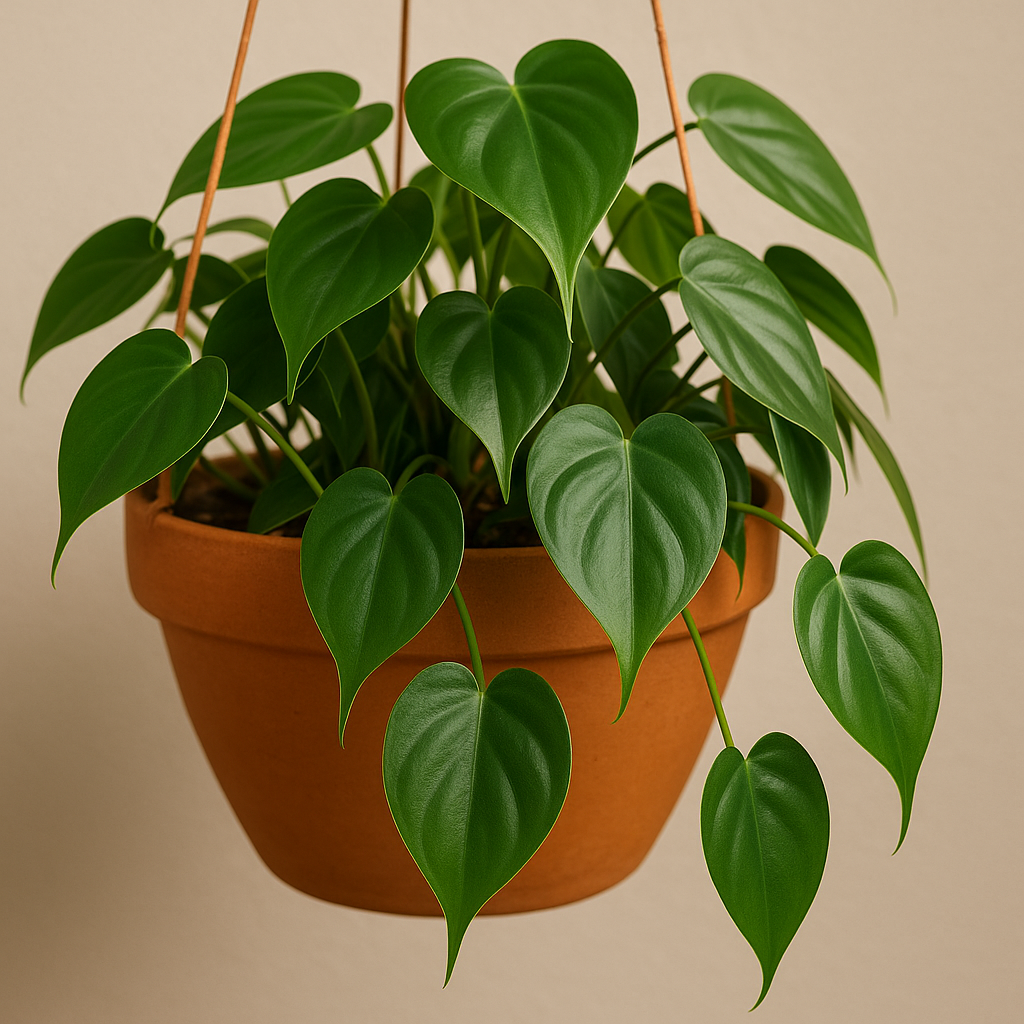The Heartleaf Philodendron (Philodendron hederaceum) is one of the most beloved tropical houseplants worldwide. Its graceful, heart-shaped leaves and low-maintenance nature make it a favorite among plant lovers, from beginners to experienced indoor gardeners. In this article, we’ll explore its characteristics, care tips, benefits, and why it’s such a great choice for your home.
Origin and Characteristics of the Heartleaf Philodendron
Native to the rainforests of Central and South America, including Brazil, the Heartleaf Philodendron thrives in warm, humid environments. It is an epiphytic vine, meaning it grows on trees in nature without taking nutrients from them. This natural adaptation makes it very adaptable to indoor growing conditions.
The plant’s glossy, heart-shaped leaves grow along long, trailing stems, which makes it versatile for different decorative purposes. It can be grown in hanging baskets for a cascading effect or trained to climb moss poles or trellises, bringing vertical greenery to your indoor space.
Why You Should Have a Heartleaf Philodendron at Home
Aside from its stunning look, the Heartleaf Philodendron offers many practical benefits:
- Air purification: According to NASA studies, many philodendrons help remove harmful indoor air pollutants like formaldehyde and xylene.
- Versatile décor: Its trailing vines and rich green color bring warmth and liveliness to living rooms, offices, bathrooms, or balconies.
- Low-maintenance: It’s an excellent plant for beginners as it tolerates a range of light and humidity conditions.
How to Care for a Heartleaf Philodendron
1. Light Requirements
The Heartleaf Philodendron prefers bright, indirect light, though it can adapt to low-light areas. Avoid direct sunlight, especially during midday, as it can scorch the leaves. A north- or east-facing window is often ideal.
2. Watering
Water when the top inch of the soil feels dry to the touch. Typically, once or twice a week is sufficient, but this depends on your climate and the season. Avoid overwatering, as soggy soil can cause root rot.
3. Soil and Drainage
Use a well-draining, airy potting mix rich in organic matter. A combination of peat moss, perlite, and compost works well. Ensure your pot has drainage holes to prevent water accumulation.
4. Fertilizing
Feed your Heartleaf Philodendron with a balanced liquid fertilizer once every 4 to 6 weeks during the growing season (spring and summer). In the colder months, reduce feeding frequency.
5. Pruning and Maintenance
Prune regularly to control size and encourage bushier growth. Remove any yellow or dead leaves to keep the plant looking fresh. Pruning can also help shape the plant to suit your space.
Common Problems and How to Fix Them
- Yellowing leaves: Often a sign of overwatering. Check for proper drainage and reduce watering frequency.
- Brown leaf tips: Can result from dry air or too much direct sun. Mist the plant or move it to a shadier spot.
- Leggy growth: Typically caused by insufficient light. Try moving the plant closer to a window.
Is Heartleaf Philodendron Toxic?
Yes. Like many other philodendrons, it contains calcium oxalate crystals, which can be toxic if ingested by pets or children. Keep it out of reach of cats, dogs, and small kids.
Propagation
The Heartleaf Philodendron is easy to propagate through stem cuttings. Snip a section with at least one node and leaf, place it in water, and roots will develop in a few weeks. Once the roots are a few centimeters long, transfer the cutting to soil.
Conclusion
The Heartleaf Philodendron is a charming, resilient, and visually stunning addition to any indoor plant collection. Its tropical vibe, low care requirements, and air-purifying qualities make it an all-around winner for both seasoned plant lovers and newcomers. Whether trailing from a shelf or climbing a trellis, it brings natural beauty and serenity to your living space.

RESTMO Garden Hose Nozzle – High Pressure & 7 Adjustable Spray Patterns
Transform your gardening and cleaning routine with this heavy-duty metal nozzle. Perfect for watering plants, lawns, washing cars, and even bathing pets with ease and precision.
Buy Now on AmazonGolden Trumpet Tree – Brazil’s National Treasure in Full Bloom
Discover the beauty and history of the Ipê-Amarelo, a vibrant symbol of Brazil. Learn fascinating facts and see why it captivates gardeners and nature lovers worldwide.
Read More
